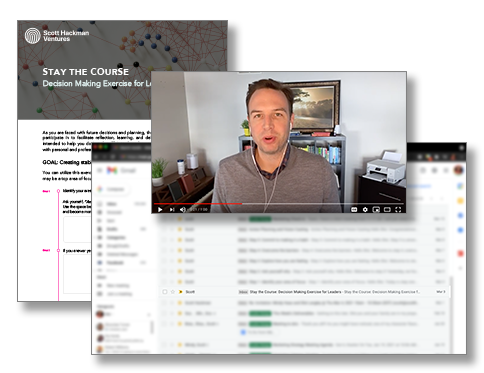One-on-one meetings are critical to team cohesiveness which is a vital component of leadership success. It is the essential opportunity to connect with colleagues and gain a full grasp of the company culture from their perspective. The bubble of workplace leadership roles and warranted focus on the big picture can sometimes create isolation from team members. The remedy is simple–effective listening, authentic concern, and consistency in conducting one-on-one meetings with employees.
Scheduling weekly or bi-weekly one-on-one meetings provides a safe space for relationship building. This will convey to your team that each individual is an integral part of the team and their input is welcome and valued. The most effective leaders have a great rapport with the team that provides them with support. They are able to bring out the best in them. A dedication to regularly scheduled, effective one-on-one meetings is the tool needed to achieve a high performing, invested team. It is also the nut and bolt that secures the foundation of an exceptional leadership development structure that encourages, inspires, and promotes the growth and success of each member.
According to expert Kim Scott, former leader at YouTube, Google, and Apple, and author of the book, Radical Candor, “One-on-ones are your must-do meetings, your single best opportunity to listen, really listen, to the people on your team to make sure you understand their perspective on what’s working and what’s not working”.
What is the purpose of a 1-1 meeting?
The purpose of a one-on-one meeting is to develop team members and cultivate psychological safety. A leader should build vulnerability-based trust with team members. This can be achieved through consistent, scheduled time allotted for open discussion between leadership and the member of the team that they lead. The focus is on the team member. It is an opportunity for the leader to actively listen without bias and to provide mentorship and support. It is an opportunity for the team member to discuss challenges, ask questions and provide feedback and suggestions.
Why are 1-on-1 meetings important to the health of the business?
While it can seem like a minor bullet point among the competing priorities on your daily to-do list, it is actually one of the most important action items. One-on-one meetings have proven, positive impact on the commitment and productivity of your team and the overall health of your business. They improve time management, encourage critical thinking, help to build relationships, foster team commitment, and increase effective communication. They provide an opportunity for an individual to have a voice and a means to quickly understand and address challenges. Just a few minutes set aside for each individual is worth the major impact it can have in creating a dynamic work environment. One-on-one meetings create the space to pass the baton effortlessly in the race to your end goal.
5 Tips to Improve 1-1 Meetings with Employees
- Make Consistent Time On Your Calendar – As a leader, you are busy. There are not enough hours in the day. However, there is so much value in setting aside dedicated time for one-on-one meetings. By holding this time consistently, you are essentially conveying to each employee that they matter and that they are a valued member of the team. This results in their personal commitment to the collective team goals. In addition, the meetings provide an opportunity to quickly and easily address challenges and avoid the growth of bigger issues. So much valuable information can be exchanged during that short time. So set aside a dedicated 15-30 minutes for weekly or less and 30-60 if you meet less frequently at consistent intervals to meet with each team member.
- Know Your Objectives for the Meeting – Knowing the objectives for your one-on-one meeting ahead of time can help manage the flow and structure of your meeting. We recommend creating a one-on-one meeting agenda. Have the team member create the agenda to guide the meeting and provide you with collaborative access to add input. As the leader, you are responsible to co-actively engage in framing the conversation and objectives. Is the objective to listen, problem solve, coach or teach? Make a note in your agenda. Also consider encouraging your team member to add their input, including important items that they would like to discuss. Ask them what is on their mind and invite your team member to bring content to the meeting for discussion. This is beneficial because it allows the employee to play an active role in the process, making them more invested in the outcomes. It also provides you both with a guideline that you can use to adequately prepare for the conversation.
- Create a Solution-Oriented Safe Space for Feedback – As a leader you must be self-aware and acknowledge biases. Your goal is to build vulnerability-based trust with your team. You must have cultural competence and appreciate and encourage diverse thoughts and experiences. You should be open, empathetic, and honest about the challenges that you have faced and how you have addressed them. See the individual as your colleague and not as your subordinate. Be up front and honest if you have to address areas that need improvement. Actively listen while they speak and provide clear, repeatable, solution oriented feedback. Remember that this meeting is not tactical. It is about problem solving, developing their knowledge and skills and building a rapport that encourages a healthy and productive working relationship.
- Prioritize Highlighting the Employee’s Strengths – Praising employees for their contributions to the team can have a profound effect on morale. There is a quote by G. B. Stern, that was mentioned in a Forbes article about the effects of managers’ emotional stinginess on employees’ work experience. “Silent gratitude isn’t much use to anyone.” If a team member has strengths, let them be known! For example, maybe an employee has skills that have not been recognized at a high level by the organization but have been essential for a particular level of genius at the team level. A one-on-one meeting is the perfect time to highlight those strengths.
- Set Goals for Addressing Areas of Improvement – We all have areas of improvement. As we venture together to do great work, we will inevitably need room to learn and grow. These areas should be a point of conversation in one-on-one meetings. We recommend setting improvement targets with the team member, and a list of action items to reach those goals. This helps you both to stay on track, recognize milestones and evaluate processes.
Next Steps
We’ve covered just a few tips that can help you to establish consistent and effective one-on-one meetings that are beneficial to the professional growth of both you and your team. We have found that the implementation of these regularly scheduled meetings can comprehensively boost productivity, team unity, and growth, and foster the emergence of new potential leaders.
Our Leadership Development Program equips current leaders with the tools they need to build future leaders within their organizations. Some of those tools include a more in-depth look at activities like those mentioned above.
Book a complimentary consultation to learn more about how we can help.
Check out other posts in this series:


Scott Hackman is the Founder and CVO of Scott Hackman Ventures. He has over 15 years of experience in business advising, coaching, and leading growth through transitions.
Meet Scott.




